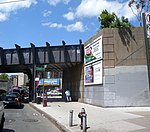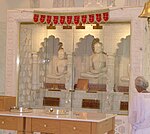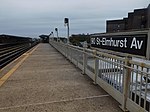Chinatowns in Queens
Chinatowns in New York CityCorona, QueensElmhurst, QueensFlushing, QueensNeighborhoods in Queens, New York ... and 1 more
Whitestone, Queens

There are multiple Chinatowns in the borough of Queens in New York City. The original Queens Chinatown emerged in Flushing, initially as a satellite of the original Manhattan Chinatown, before evolving its own identity, surpassing in scale the original Manhattan Chinatown, and subsequently, in turn, spawning its own satellite Chinatowns in Elmhurst, Corona, and eastern Queens.
Excerpt from the Wikipedia article Chinatowns in Queens (License: CC BY-SA 3.0, Authors, Images).Chinatowns in Queens
Whitney Avenue, New York Queens
Geographical coordinates (GPS) Address Nearby Places Show on map
Geographical coordinates (GPS)
| Latitude | Longitude |
|---|---|
| N 40.7422 ° | E -73.8786 ° |
Address
Whitney Avenue 86-27
11373 New York, Queens
New York, United States
Open on Google Maps











